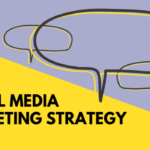
Content is the king’ in SEO? You need to rethink
My friend recently paid a content marketer to write the best content to promote in the market for his new website. While going through the content, I realised how frequently the writer has used a word and how closely related words could be replaced in the content. Wondering on the stuffing of keywords, it was my duty to inform my friend about the importance of the context of the content. All this time the content was the king ruling the whole kingdom of digital marketing to lure viewers, but the time has changed, and the context is set to rule this kingdom now with its importance in the digital world.
How different is context to content?
Although the context and the content are closely related in the world of marketing, there is still a thin line making a difference between them. Let’s say that the context is a container, comprising the scene, and the setting of the whole concept and the content is what’s inside it. The content depends on the context to give life to it; without the context, there is no meaning of the content. What will a flower do without a flower pot? The flower pot will enhance the beauty of that flower. Similarly, the context weaves the content together into a picture for the audience to target and dwell right customers.
Change in keyword stuffing norm
While marketing has always been user intended, stuffing the content with the keywords and phrases a user will search was the topmost concern. But Google is smarter than you! Google saw how you used to stuff the keywords anywhere in the content just to fetch more viewers and modified its rules. Adding keywords in the content is still an essential factor. However, the keyword targeting rule has changed. A search engine primarily focuses on the intent of the user and the context in which he is searching the web. For the better ranking of your website, you should add correlating data, information, and keywords in your content.
For instance, a user who is searching to buy a bed for his room might be shifting his house and would need a lot more other things than the bed. If not shifting, he may be renovating his home but will still need other stuff like a cupboard, side-table, and other things to build his room. The use of related keywords is called latent semantic indexing (LSI). LSI keywords target a broader audience, making sure that the context is for the user. Use Google to check the searched keywords, and make a list of those keywords that are related to your context.
User intent- a priority
You must know the purpose of your targeted audience to come to your website, what do they want and what are they searching for on the internet? Have they landed up on the right page and is the information relevant to them? The context should be directly targeting the audience to turn the lead into customers. Additionally, your content should be informational for the reader who is there to know about the products or services, and promotional for the people who are willing to buy it. The provided information will increase the dwell time of the page, indirectly helping you to rank your website higher.
Now, what’s dwell time?
The dwell time is the amount a reader spends on a page. Ideally, 3 minutes is the average dwell time a user should spend on a webpage to boost its ranking for Google. When a user invests more than 3 minutes on your web page, Google receives the signal that the page is relevant to the user and answers the asked query. If the context or the setting of your website is user-friendly and provides the right information to people searching for an inter-related topic, then the search engine will reward you by ranking it higher.
Increasing the ROI
The right context of your website will make the product or service reach the right person, with the right message, and at the right time generating a higher rate of investment (ROI). Because focusing on the relevance and the context of the website, your business will attract, engage, nurture, and convert the leads by providing valuable content with the correct context. As the context helps visitors turn into leads, converting them into customers.
Gone are the days when the content was the king, while it still matters what’s inside the flower pot, the flower pot itself matters too now.

